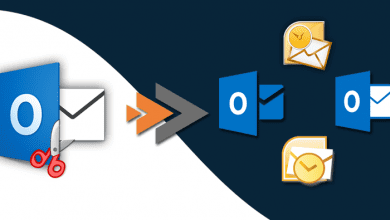What is Unified Endpoint Management and Why it is Needed

Several businesses find it difficult to scale their IT security systems as they grow. The pandemic has pinpointed the need for a robust remote IT infrastructure that caters to employees working from home. Businesses face complex security scenarios due to several end devices and managing them is a challenge. The latest cybersecurity trends showcase why you need a Unified Endpoint Management system (UEM). Always use an advanced UEM tool that can enhance the security apparatus.
What is a Unified Endpoint Management System?
An advanced stage in endpoint management is using a UEM with extensive capabilities to handle remote work. The essence of UEM capabilities lies in securing business applications and resources through a centralized console. It uses advanced technologies and enables a consolidated tracking system of various endpoints. It also accommodates several remote employees working on different devices.
The advanced UEM technologies enable a new approach to multi-device control and cover various types of devices. It helps to ensure network security as more employees prefer to work remotely. Moreover, more businesses are digitally transforming their workflows and opting for IoT devices. It helps in centralizing the configuration and running smooth operations.
Why Do Businesses Need a UEM application?
The pandemic has led to increasing demand for UEM solutions. There was a requirement to accommodate remote workers on different devices. Legacy applications cannot mitigate risks related to remote workforces. While it becomes difficult for businesses to track their workforce properly, devices can become unmanageable as they can quickly go on and off the network.
If there are no processes and procedures to track remote devices, the business can face several siloes of endpoint devices. It leads to high inconsistency levels across the network. What is more intriguing is that companies are devoid of the ability to generate comprehensive reports on asset utilization. As there is significantly less visibility across the various endpoint devices, your security management techniques are reactive.
Unless you have an advanced Unified Endpoint Management system, your remote employees will be free to access public wi-fi networks or access malicious websites. These can cause severe concerns for your business, apart from the risks of having unapproved software downloads. The IT team will have to undertake manual provisioning of the endpoints, which will lead to additional work for them. The CAPEX for device management will see an increase too.
Critical Features for a UEM Tool
The use of a UEM tool has changed. Their utility is to safeguard the devices used by the organization. The solution must have a few critical features to protect the network components and devices across the network.
Threat monitoring and mitigation
Businesses face an increased risk of cyberattacks. They must proactively keep the end devices secure. The UEM tool must configure all devices in the company. Advanced solutions can have additional features like handling the entire device lifecycle, location management, and onboarding devices.
Having identity management features
Businesses must protect their network from all threats. They must have a robust identity management system to restrict data only to the relevant groups. It allows restricted access to critical information to only a few employees.
Handling multiple devices simultaneously
Your business will have a wide assortment of devices. Handle all devices properly to provide a comprehensive security umbrella for the network. Identify all device types to provide a streamlined mechanism to control network security.
Using various security features
The UEM tool must have the facility to provide security for the applications, devices, etc., over different methods. Some of the popular ways include app containerization or using a VPN connection. The detection capabilities and techniques can vary across UEMs, but businesses must thoroughly vet the security capabilities before finalizing.
Managing applications comprehensively
The business admins must ensure a secure environment that will allow only downloads of pre-approved application categories. Unified endpoint management solutions must also have advanced analytics features to assess trends and changes the application download policy.
Automated patch management
It is difficult for the IT team members to attend to patch management manually. The UEM tool can help address loopholes in the network. Apart from helping patch management, it can help the team with insights to make better decisions.
Benefits of Unified Endpoint Management
Improved IT security
Businesses must have a centralized terminal to address the security issues across all devices in the network. With IoT devices and remote work, handling security across the network is a problem. A UEM can help track suspicious activities and address security problems. Provide personalized access according to company policies and hierarchies.
Better network-wide visibility
The UEM is a centralized application that allows visibility across all devices in the organization. It can also track devices used by employees when working remotely. Businesses can have a centralized window to access any gaps in security and address them promptly. The stakeholders must stay alert, be aware of possible threats, and act proactively to thwart them.
Enhanced device management
The application uses a single window to manage devices and reduces resource requirements for the business. The management workflows are more straightforward. They can be delivered across the network infrastructure globally from a single location.
Minimizes endpoint complexities
It isn’t easy to control the employees’ devices and several IoT devices. The devices can have different operating systems, configurations, security apparatus, etc. Your UEM must support multi-platform features, providing a fully integrated solution for all devices.
Assures better business decisions
Advanced UEMs provide comprehensive data analytics, providing information about the devices across the business. It can help managers make suitable decisions regarding reducing infrastructure costs and enhancing performance and security levels. It can also ensure faster root cause analysis and proactively react in the future.
Factors to Consider When Choosing the Best UEM for Your Business
When selecting a UEM for your enterprise, you must consider a few necessary factors.
Integration capabilities
Your UEM solution must integrate with various devices manufactured by different entities. Constantly assess whether the solution can integrate with all such devices available across your company. It must also support the software that you use across the business.
Being future proof
The UEM solutions must have a proper roadmap and forecast the problems your company can face in the future. Always stick to the renowned brands that can assure you that you are confident about frequent updates and address any gaps in the product.
Assess the cybersecurity mechanisms
Always check the policies and procedures supported by the tool. It must allow you to enforce your internal security policies. The solution must readily detect new threats and prevent any attempted data breaches. The solution must have an option to encrypt data on required devices.
Automation requirements
Businesses must optimize workflows and ensure their employees are productive. A UEM solution must be capable of supporting the automated deployment of the devices. Any additional device must not take too long to integrate into the network.
Product pricing
You must have a proper budget when shopping for UEM software. However, remember that the pricing model of all products isn’t the same. Do a TCO calculation that will help you compare similar products. Also, consider the number of devices supported in the price plan.
How HCL UEM Solution can Help Businesses
HCL BigFix is an automated endpoint management solution that can remediate the vulnerability in several ways. It can automate the management of endpoints across multiple platforms, including virtual, mobile, or the cloud. BigFix can manage nearly 100 operating system versions and support tool consolidation and streamlined operations.
Businesses can stay assured that the solution can ensure compliance of all elements on the network and all devices too. It leverages the capabilities of Continuous Compliance and delivers higher patch success rates. It can undertake security checks and improve your security posture.
Conclusion
Companies face increasing cybersecurity risks and managing end devices is critical to thwarting such attacks. A centralized Unified Endpoint Management system can provide an added security layer for your network.
The HCL BigFix is an essential tool that allows IT teams to manage endpoints proactively. Faster incident responses are a hallmark of such systems. It also ensures increased productivity as lesser resources get allocated.
Get in touch with our UEM team for a detailed discussion





